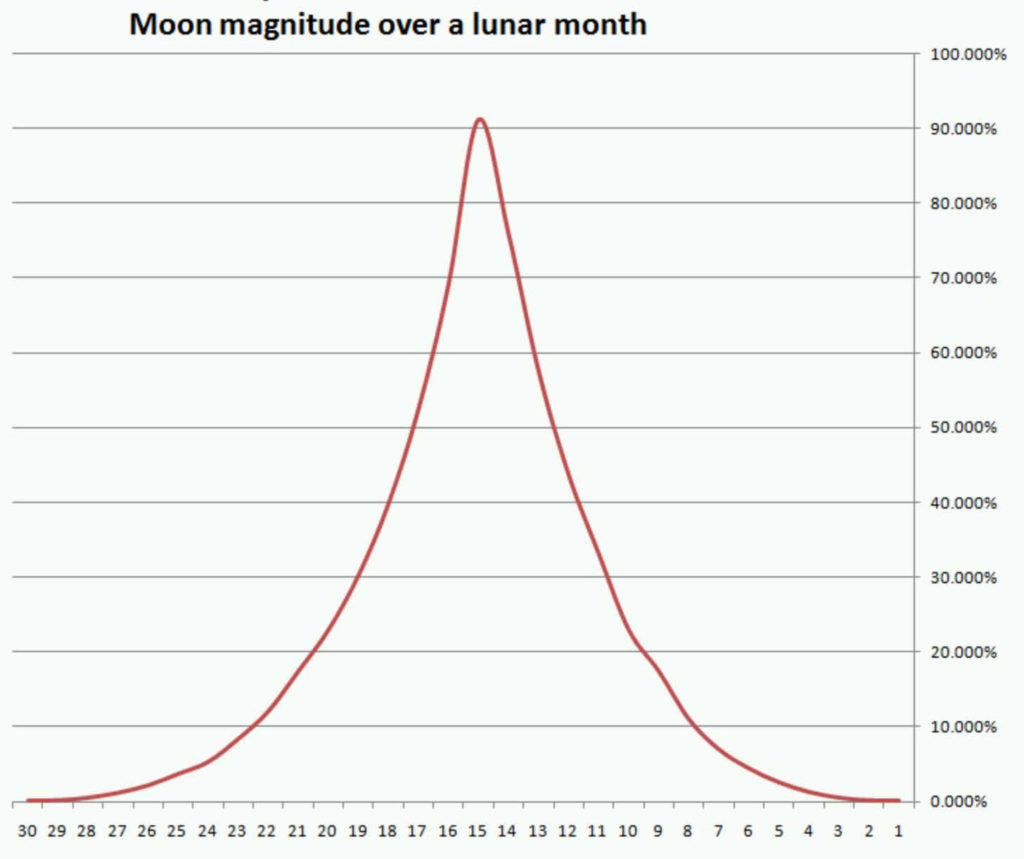Sky Report – October 18 – October 24

This is not the best week for stargazing because the moon is full on Wednesday the 20th and its bright light washes out all but the planets and the brighter stars all this week. To be exact, the moon is full at 8:57:39 a.m. that morning, which is the precise moment when the moon is directly opposite the sun. In practice we say the moon is full all day and in reality it does look full for several days. At any rate, it reflects sunlight back to earth and lights our night-time sky.
By the way, the moon is more than twice as bright on the night when it is full as it is three days before and after, although it doesn’t look it, and this is because when the sun is shining straight down on it tiny crystals in the moon rocks reflect more light back to earth than when they’re lighted at even a slight angle.
Moonlight doesn’t dim the three planets that are out tonight. Venus is the brightest, and it appears low in the southwest as the sky is growing dark. Telescopically Venus looks like a tiny half-moon, and as it approaches the earth in weeks to come it will become an increasingly slim crescent, but you do need a telescope that magnifies at least 50 times to see its phase, or shape. The phases of Venus were discovered by Galileo who was the first to point a telescope toward it.
Jupiter is the second brightest planet, but you see it in the south against a darker sky, so Jupiter looks as bright as Venus. Jupiter is due south at around 10 p.m. and then it moves toward the west, setting a few hours after midnight.
Saturn is 15° to the right of Jupiter (remember that the width of your fist held at arm’s length is about 10°) and it’s only 1/20th as bright, but that’s still as bright as the brighter stars.
Mercury is in the morning sky where it rises an hour before the sun.
Normally you might look for the Orionid Meteor Shower which peaks on the morning of the 22nd, but this year bright moonlight ruins it. That’s a shame because these meteors are dust shed by Halley’s Comet long ago, and on a dark night you might see one meteor every few minutes radiate from the direction of Orion.
Under a grant from the Utah Governor’s Office of Economic Development and the Kane County Office of Tourism, Stellar Vista Observatory offers portable telescopes and tripod mounted binocular kits on loan for free to all residents of Kane County. Nothing beats a quality binocular or astronomical telescope to enhance enjoyment of the night sky! Visit https://stellarvistaobservatory.org/discover-the-night-sky/ or Kanab City Library for full details.
The Sky Report is presented as a public service by the Stellar Vista Observatory, a nonprofit organization based in Kanab, Utah, which provides opportunities for people to observe, appreciate, and comprehend our starry night sky. Additional information is at www.stellarvistaobservatory.org. Send questions and comments to John@StargazingAdventures.org.






Comments are closed.